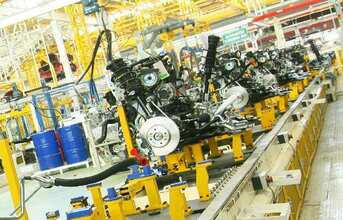
Winning Leap Solutions
1. Remove regulatory hurdles and focus on skills - For India to achieve its targets on the value-added-manufacturing vector, it needs to first remove regulatory hurdles that have made doing business in India difficult.
That includes simplifying policies related to land, labour, and the environment and providing single window clearances for obtaining business permits. Strengthening manufacturing skills training will also prove crucial.
For example, in Germany, vocational education and training (VET) is seen as a pillar of the nation's education system. Two-thirds of German youth undergo vocational training in both the workplace and vocational schools.
They receive broad-based (i.e. basic advanced) training and gain the skills and knowledge needed to practise a trade. Those completing the training qualify for jobs in about 355 recognised occupations that require formal training.
2. Import technology to strengthen manufacturing capabilities - Importing foreign technology can help Indian manufacturers strengthen their capabilities. In the 1960s and 1970s, South Korea began enhancing its domestic manufacturing capabilities through methods such as reverse engineering and foreign licencing.
Indian companies are making strides in this direction through joint ventures, licence arrangements, and acquisitions. But they will need to step up the pace to help the nation reach the proposed target. With the government's help, business can do so by increasing investment in research and development (R&D), with the goal of ultimately reducing dependence on technology imports.
3. Make structural shifts in manufacturing - As Indian manufacturers shift their focus to high-tech industries, they will need to invest in R&D and develop new technological skills. The report shows that the share of R&D in India's GDP will have to grow from its current 0.8% to 2.4% in 2034 to achieve the desired gains in value-added manufacturing.
(Continued on the next page)


























